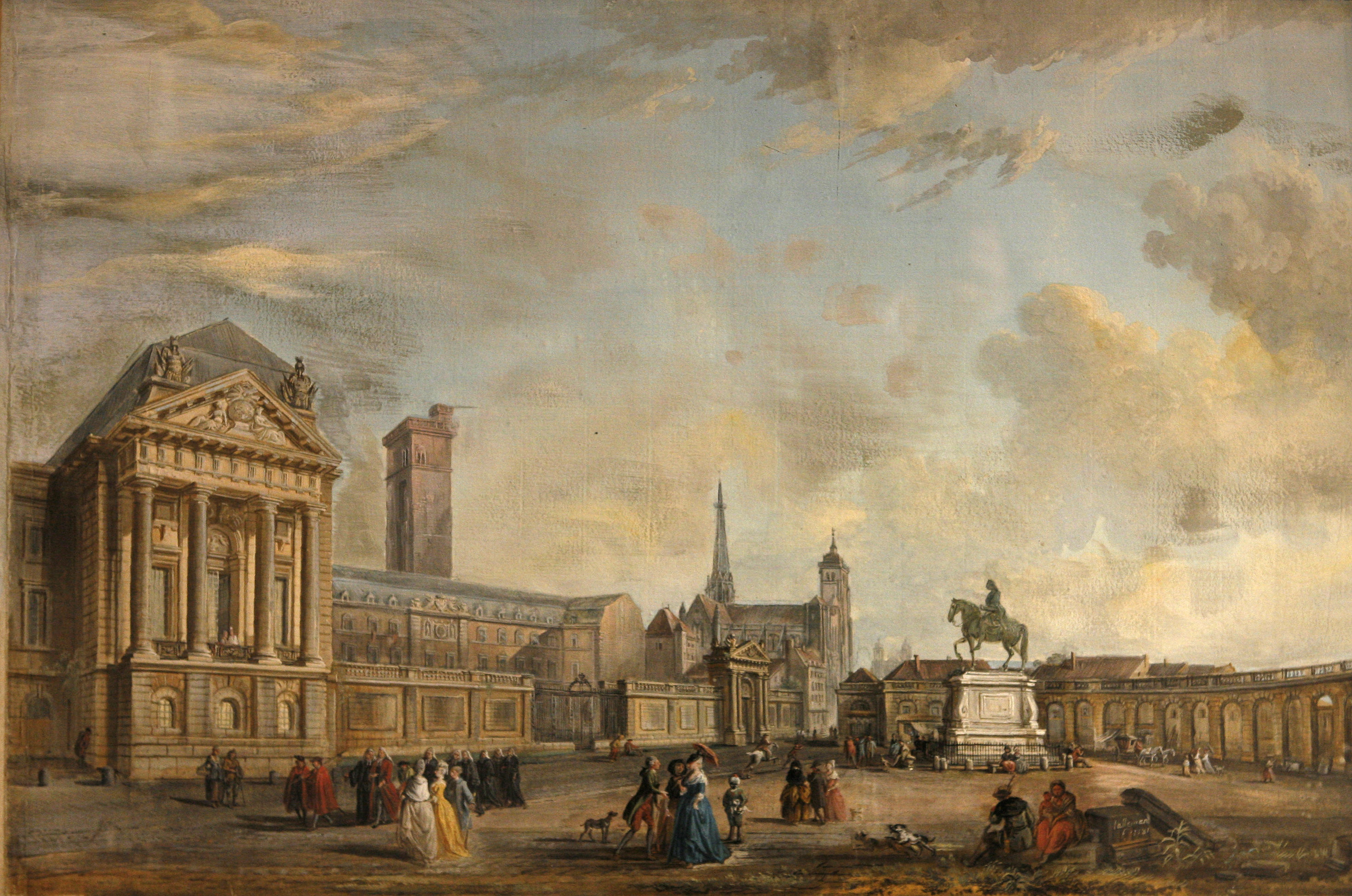The Reduced Bronze Models of the original Equestrian Statue of Louis XIV.
by Etienne Le Hongre (1628 - 1690).
The Original constructed for La Place Royale at Dijon.
Commissioned by les Etats de Bourgogne and contracted on 18 May 1686, it was eventually erected on la Place d'Armes in front of the Logis du Roi in Dijon in 1748 (destroyed in 1792).
The model was completed and the cast is taken
immediately afterwards in 1690 the year of the
death of Le Hongre.
In 1692, the statue was transported by boat along the
rivers Seine and Yonne to Auxerre. The poor state of the roads and the weight
of the two pieces of bronze sculpture halted the journey.
The statue and the horse were then stored in a barn
in the village of La Brosse for 27 years. Is was only in 1720 that it was to be
successfully transported to Dijon, where it was then stored in the Courtyard of the Logis du Roi.
There was a wait another four years until a decision
was made regarding the design of the
pedestal . Jacques - Ange Gabriel, architect in ordinary to the King, completed the design in
1725, but the décoration of the base was not completed, and surrounded by railings
until 1742, the commemorative inscriptions were not completed until 1747. A
space of 62 years between inception and
completion!

Design by Harduin Mansart
Jean Baptiste Lallemand, 1781
Musee des Beaux Arts Dijon
Equestrian Statue of Louis XIV
by Etienne Le Hongre (1628 - 90)
Bronze:
High. 34.5 Long. 32 width. 15 cm.
Base: High. 10.5 Long. 28 width. 15.5 cm. High. total: 45 cm. (Queue and right guide restored,
repaired patina).
Provenance : The family of the architect of the Place Royale, Dijon - Martin Durey Count Noinville (Paris, c 1658 - Dijon, 1728.), Architect of the Royal Place, Dijon. - For descendants of Alix Durey Noinville wife Octave Raguenet Saint-Albin, 17 rue d'Illiers Orleans, 1882. - By descent, private collection, Orleans.
This version sold at Auction by SVV
Rouillac. Sunday, June 7. 2014 Château
d'Artigny, Montbazon (Indre-et-Loire).
Photographs courtesy Messrs Rouillac.
Described as 'Réduction
de la statue équestre du roi commandée par les Etats de Bourgogne le 18 mai
1686, érigée sur la place d'Armes de Dijon seulement en 1748 (détruite en
1792)- bronze fin 17e siècle'
This statuette was acquired by Versailles in 2009 - the Versailles Collection website states that the State of Burgundy commissioned an Equestrian Statue of the king from the sculptor Etienne le Hongre to be cast by the founders Aubry et Scabol, a statuette was placed in the collection of the King's bronzes in the centre of the Oval Room at Versailles.
____________________________________________
Equestrian Statue of Louis XIV.
Prado Museum Madrid.
108 x 87 cms
The say Early 18th Century - Studio of Girardon.
But there are obvious differences - particularly the sword and saddle.
Noted in the inventory of Felipe V, La Granja, 1746.
It is ascribed to Le Hongre by Souchal in French Sculptors .......
.
Copyright ©Museo Nacional del Prado.
_____________________________________________
Various other versions of Le Hongres version of the Equestrian Statue of Louis XIV exist.
_____________________________________
Augustus the Strong in the Green Room (Grunes Gewolbe) in Dresden.
Cast from a model by Le Hongre but the head replaced with that of Augustus.
Acquired in Paris in 1716 by Raymond le Plat
Poor low res photograph from
This pre war photograph taken before the destruction of the original stand. The bronze slaves survived.
______________________________
An Eighteenth Century Riderless Bronze Equestrian Statuette.
Sotheby's London sold a superb riderless equestrian statuette on 8 July 2015, lot 29.
attributing it to Coysevox and dating it to the late 18th century.
The saddle cloth has been cast separately.
83 x 87 x 31 cms.
Provenance -
probably
Joseph Depestre, Count of Seneffe and Turnhout, Château de Seneffe, Hainaut,
Belgium, by 1791; thence by descent to his heirs;
Probably their sale, 24 October to 17 November 1825; probably Viscount Mathieu Denis Claire Talon, Marquis of Boulay, until 1853; by descent to Denis Gabriel Victor Talon and Marquise Carolina Sampieri, Villa
Talon, Bologna, circa 1853; and thence by family descent.























No comments:
Post a Comment